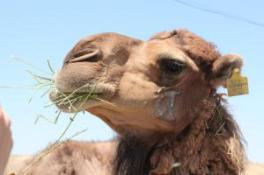In previous article I told you about the camel work in Australia shared by Hannah Purs. Here are some more updates by her again. She wrote as;
Camel Introduction to Australia
Camels were introduced and adapted by Afghan cameleers in Australia. That time almost 20000 camels along with 2000 cameleers were brought to Australia for different purposes of work. The details can be seen in the link below.
http://www.cameleers.net/
Australia is blessed to be home to the world’s largest population of free roaming dromedary camels, animals that have been effectively quarantined against typical camel ailments found in the rest of the world since the early 1900s. In 2008 Desert Knowledge, an Alice Springs based organization, put together an estimate of wild camel numbers in Australia, they spread far and wide that there was around 1 million camels in Australia. Later on camel shooting suggestion came on the ground.
For details please go to the link;
http://www.businessinsider.com.au/some-bad-advice-on-wild-camel-numbers-may-have-cost-the-federal-government-millions-in-cash-exports-and-jobs-2013-11

Camel Milk for Australia
Camel milk is in such high demand in Australia that it was being resold at $200 a litre on Gumtree (on online trading site) in November 2014. There is anecdotal and scientific evidence suggesting that camel milk can be invaluable in treating a number of diseases; from autoimmune issues to diabetes and renal problems to autism to therapy for those with cancer.  A camel milk project was then desigend and implemented to harvest this untapped resource of camel milk in Australia. This project has constantly reassessed its targets.
A camel milk project was then desigend and implemented to harvest this untapped resource of camel milk in Australia. This project has constantly reassessed its targets.
For details, please go to the link below.
http://www.camelmilkaus.com
In an email, she wrote further as concluding remarks as ‘
Some of the challenges that we’ve faced so far are:
Local people not wanting camels in the area
Government legislation changes
The cost of starting a dairy
Achievements:
Developing a training method which allows us to train camels very fast with no ropes or halters
Creating conversation within the Australian media about camels and their value





 oduction
oduction















